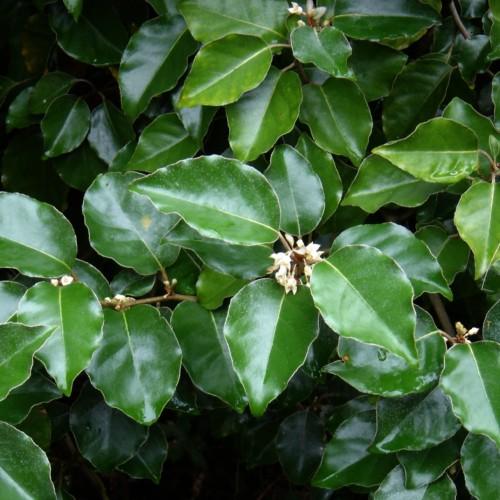
oleaster
Elaeagnus macrophylla
Cycle:
Perennial
Watering:
Average
Hardiness Zone:
7 - 9
Flowers:
Flowers
Sun:
Full sun,part shade
Fruits:
Fruits Ready In Fall
Edible:
Yes
Leaf:
Yes
Growth Rate:
Low
Maintenance:
Moderate
Drought Tolerant:
Yes
Salt Tolerant:
Yes
Thorny:
Yes
Invasive:
Yes
Care Level:
Medium
watering
Oleaster needs to be watered about twice a week in the summer months and once a week in the winter months. The soil should be moist but never soggy, so be careful not to overwater the plant. Water at the base of the plant and allow it to soak through to the roots. During the hot summer months, water more frequently if temperatures stay above 80 degrees. Oleaster likes a deep watering, so allow the water to soak deep into the soil.
sunlight
Oleaster (Elaeagnus macrophylla) plants require between 6 to 8 hours of direct sunlight daily in a location with well-draining soil. Ideally, the plants should be located in a spot that receives full sun in the morning and then partial to full shade in the mid-afternoon when the sun is hottest. This ensures that the plants receive the sunlight they need while also avoiding scorching and leaf-scorching from too much direct sunlight. In areas where full sun cannot be provided, the plant should be located so that it receives indirect sunlight for most of the day.
pruning
Oleaster (Elaeagnus macrophylla) should be pruned in late spring, just after flowering. Only remove dead or overgrown branches. Prune selectively to maintain the desired shape of the plant. Make sure to leave some of the larger branches intact to ensure good air circulation. If it gets too large, severe pruning can be done, but will sacrifice flowering for the current year and should be reserved for woody stems only. To control the size and shape of the plant, prune young branches back to 1/3 of their length. To encourage healthy and bushy growth, prune back branches to just above a leaf bud. Generally, pruning shouldn’t be too severe and should consist mostly of thinning out branches to allow light and air to penetrate the plant.
